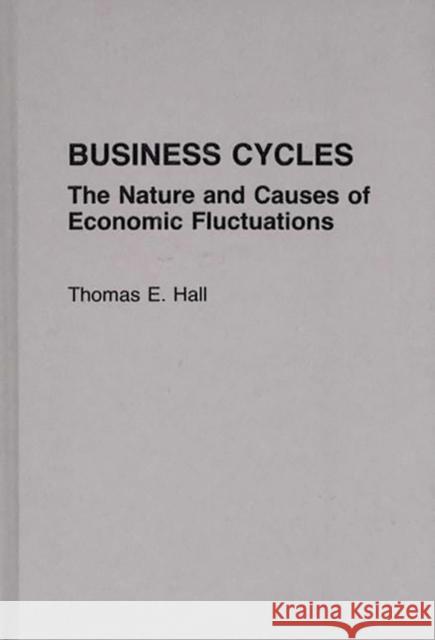Business Cycles: The Nature and Causes of Economic Fluctuations » książka
Business Cycles: The Nature and Causes of Economic Fluctuations
ISBN-13: 9780275930851 / Angielski / Twarda / 1990 / 256 str.
Business Cycles: The Nature and Causes of Economic Fluctuations
ISBN-13: 9780275930851 / Angielski / Twarda / 1990 / 256 str.
(netto: 342,30 VAT: 5%)
Najniższa cena z 30 dni: 355,74 zł
ok. 30 dni roboczych
Bez gwarancji dostawy przed świętami
Darmowa dostawa!
Hall's excellent survey of business cycles is concise, lucid, and up-to-date discussing not only early theories of the business cycle and Keynesian and monetarist models, but also the rational expectationist and new Keynesian models along with actual business cycles. . . . Strengths of the book include an excellent bibliography and Hall's insightful history of business cycles from the panic of 1907 to the long cyclical expansion beginning in late 1982. "Choice"
Intended as a primary text for upper-level undergraduate and graduate courses in business cycles and economic fluctuations, this book treats the nature and causes of business cycles. In contrast to previous works on the subject, which have tended to focus on basic macroeconomic models and intermediate level theory, "Business Cycles" offers both a broader scope and more in-depth coverage, concentrating on modern theories of the business cycle, data analysis, and recent and historical episodes of economic fluctuation. The author amplifies and combines the various theories that comprise the modern view of business cycles and develops a systematic rationale for economic fluctuations that integrates the key concept of economic shocks. Hall demonstrates that an economy grows over time but receives periodic shocks--such as oil price increases or monetary instability--which generate fluctuations. In addition to examining the nature of shocks that cause recessions and expansions, Hall suggests ways to forcast these cycles.
Hall begins with a general overview of economic cycles and economic indicators and goes on to review the historical explanations for economic fluctuations that form the foundation for more modern theories. The contemporary theories of fluctuations--Keynesian, and real business cycles--receive extended treatment. Each theory is discussed in detail in a separate chapter that includes relevant empirical data. Hall then describes the nature and causes of several business cycles during the twentieth century, enabling the reader to see how the various alternative models of cycles explain actual phenomena over time. Finally, he examines some macroeconomic puzzles in the study of cycles and concludes with some observations about the performance of macroeconomic forecasting methods.











